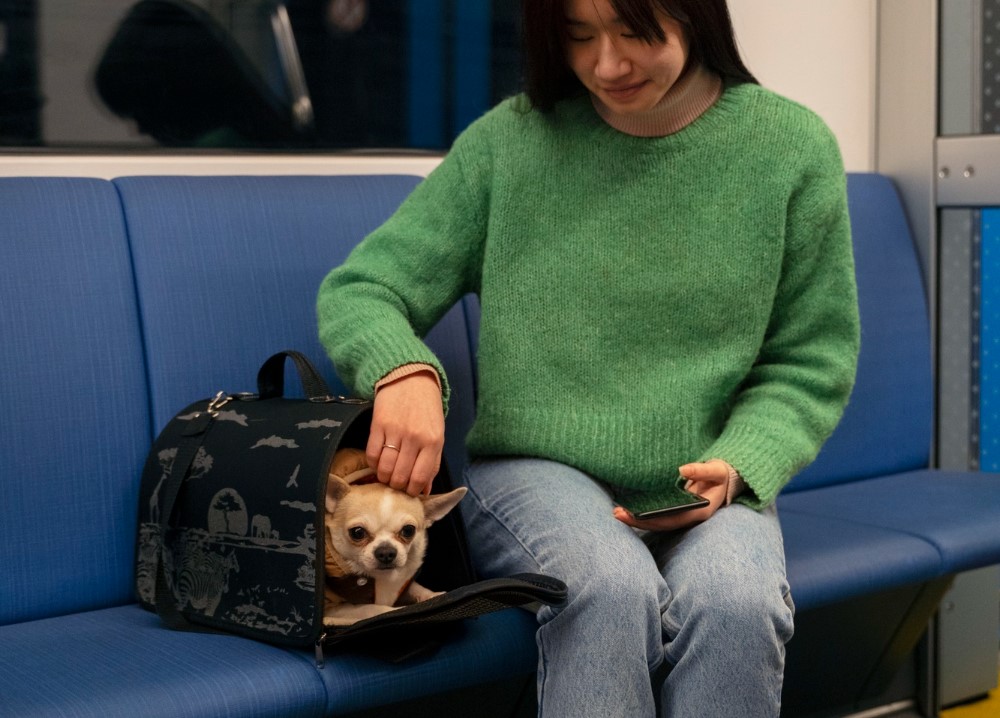As a devoted pet parent, navigating public transportation with your furry companion can be both an exciting adventure and a logistical challenge. This comprehensive guide aims to provide everything you need to know about pet-friendly public transportation, ensuring a seamless and enjoyable experience for both you and your pet. From understanding the rules and regulations to tips for stress-free travel, let’s dive into the world of pet travel on public transit.
Preparing Your Pet for Travel
Pet care is paramount when it comes to public transportation. Preparing your furry friend for the journey is essential to ensure their comfort and well-being. Begin by acclimating your pet to the sights and sounds of public transit. Gradually expose them to the environment by taking short rides or walks near bus stops or train stations. Additionally, make sure your pet is comfortable wearing a leash or harness, as these are often required during travel.
Choosing the Right Mode of Transportation
When considering pet travel, it’s essential to choose the right mode of transportation based on your pet’s size, temperament, and the transit system’s policies. Different modes of public transportation cater to pets in various ways.
- Buses: Many urban buses are pet-friendly, allowing small to medium-sized pets on board. Some buses may have designated areas or request that pets be kept in carriers.
- Trains: Several train systems accommodate pets, with some having specific pet-friendly cars or allowing pets during non-peak hours. Check with the transit agency for guidelines and restrictions.
- Subways and Light Rail: Some subway and light rail systems permit pets, but policies vary. Be aware of size restrictions and guidelines for leash use in these confined spaces.
- Ferries and Boats: If your city has water-based public transportation, inquire about their pet policies for ferry and boat travel. Some water taxis are pet-friendly.
Understanding these nuances will help you select the most suitable option for your pet.
Investing in Pet-Friendly Gear
Equipping yourself with the right gear can make pet travel on public transportation much more manageable. Invest in a sturdy and comfortable pet carrier that meets the size requirements set by the transit agency. Ensure the carrier is well-ventilated and secure, providing a cozy space for your pet during the journey. Additionally, bring along essentials such as water, treats, and waste disposal bags to cater to your pet’s needs.
Navigating Pet-Friendly Routes
Not all routes within a public transportation network may be pet-friendly, so plan your journey accordingly. Some transit systems have specific pet-friendly buses or train cars, while others may only allow pets during off-peak hours. Utilize online route planners or contact customer service to identify the most convenient and pet-friendly routes for your travels.
Respecting Fellow Commuters
Pet travel etiquette is crucial to maintaining a positive experience for both pet parents and fellow commuters. Always be mindful of other passengers, keeping your pet close and well-behaved. Use designated pet areas when available, and respect the personal space of those around you. Consider carrying a small towel or blanket to place on the seat beside you, minimizing any potential inconvenience to other passengers.
Ensuring Pet Safety and Comfort
The safety and comfort of your pet should be the top priority during public transportation journeys. Secure your pet in an appropriate carrier or on a leash, preventing them from wandering or causing disruptions. If your pet is nervous or anxious, consider using calming products or consulting with your veterinarian for advice. Always monitor your pet’s well-being throughout the journey, addressing any signs of distress promptly.
Preparing for Emergencies
While pet travel is generally safe, it’s crucial to be prepared for emergencies. Carry a small pet first aid kit containing essentials such as bandages, antiseptic wipes, and any necessary medications. Have contact information for local veterinary services at your destination, just in case. Being proactive in preparing for emergencies will ensure that you can swiftly address any unexpected situations that may arise during your travels.
Understanding Accommodations for Service Animals
Public transportation systems are typically accommodating to service animals, recognizing their vital role in assisting individuals with disabilities. If you have a service animal, be aware of the specific policies in place and ensure that your companion has the appropriate identification. Service animals are often exempt from size restrictions, but it’s advisable to check with the transit agency to ensure a seamless travel experience.
Advocating for Improved Pet-Friendly Public Transportation
As the demand for pet-friendly public transportation grows, it is essential for pet parents to advocate for improved services and policies. Engage with local transit authorities, provide feedback on your experiences, and express the importance of accommodating pets on public transit. By actively participating in the dialogue, you contribute to creating a more inclusive and pet-friendly urban environment for everyone.
Navigating the city with your furry friend using public transportation can be a rewarding and enjoyable experience with proper planning and consideration. Prioritize pet care and pet travel by understanding the specific policies of your chosen transit system, preparing your pet for the journey, and investing in the right gear. Respect fellow commuters, prioritize safety and comfort, and be proactive in preparing for emergencies.
By following these guidelines, pet parents can seamlessly integrate their furry companions into their urban adventures, fostering a more inclusive and pet-friendly public transportation system for all. As cities evolve to cater to the needs of both two-legged and four-legged residents, the joy of exploring together becomes more accessible, creating lasting memories for pet parents and their beloved companions.
Image by Freepik

